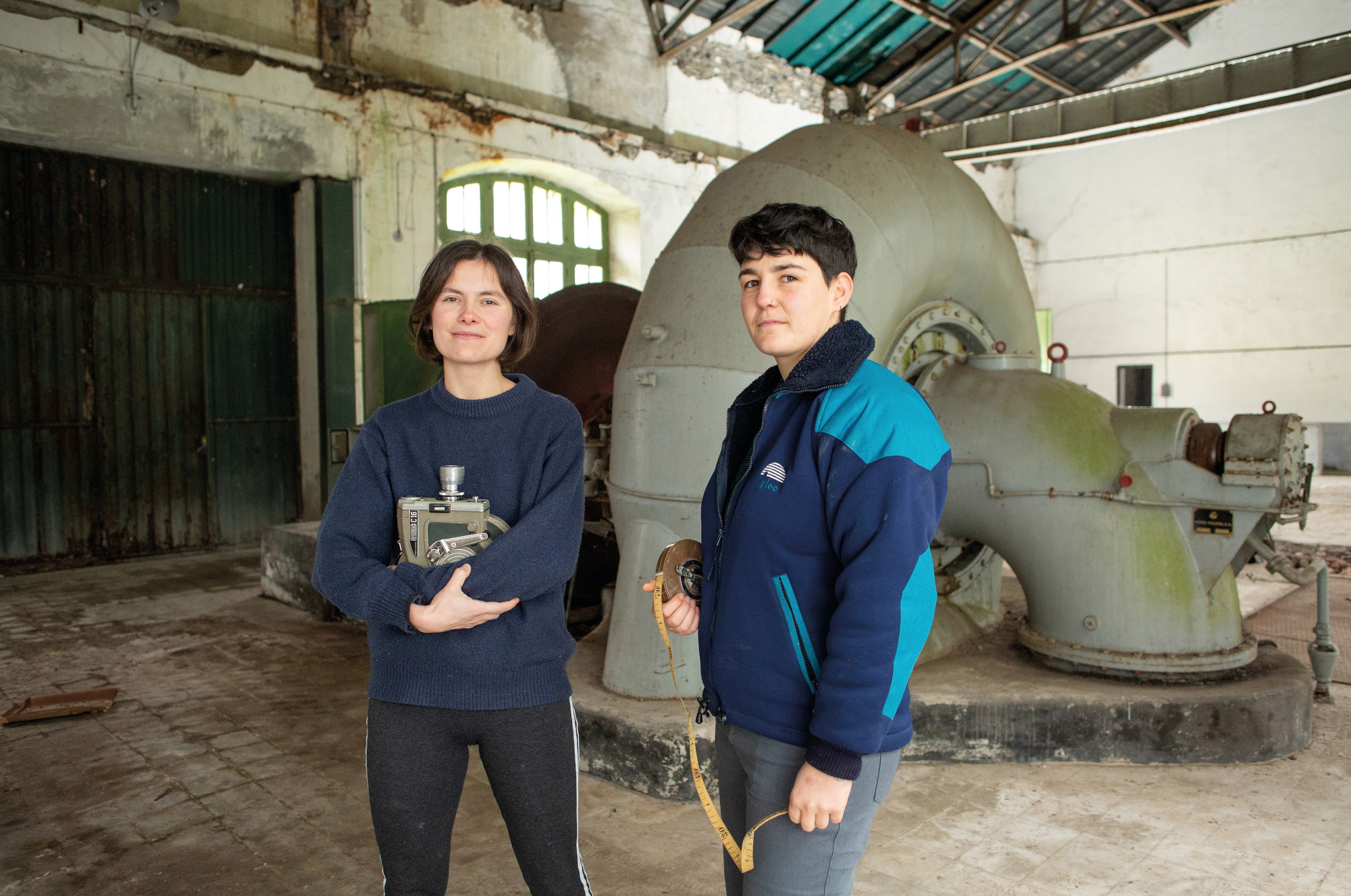Eucalyptus and pine harm amphibians?
- As if the walking sticks on the eve of Santa Águeda had woken him up, he leaves the hiding place for which the winter passes and heads to the wetlands of the area to enlarge the palatated triton. Now is the time. There it will be hidden beneath the leaves of the bottom of the well, or perhaps in sight, although its brown color will make it difficult for you to see. However, proliferation and good health do not depend solely on the triton. In fact, according to the latest studies of the Society of Aranzadi Sciences, plantations of pines and, above all, eucalyptus, are harmful to the health and reproduction of tritons.

The palatated triton is a species of Western Europe and a fairly common animal in the Basque Country, except in the south of Navarre, where it can be found in the rest of the areas. However, being a little uncommon does not make it familiar, and there are still many of us who have never seen this peculiar little amphibian. Among those who know it, there are those who call it “lauhankakoa”. In fact, many seniors believe that the palatated triton is a four-legged bounce. But the assumption was half-false. The palatated triton, unlike frog and toad, is born in the same way you will have when you're an adult. New-born tritons will come out of the eggs that the female lays on the fine herbs of water.
These eggs need land and water to be able to put them in and fulfill their life cycle. That is why not only is the wetland that tritons use to reproduce, but also the land around it important. If the amphibian is to survive, it needs both in good condition.
Considering this, and given the evolution of wells and their environments in the Basque Country, the Department of Herpetology of the Society of Aranzadi Sciences has been conducting several investigations in recent years. For example, they wanted to see whether the type of forest and the plantations of trees surrounding our wells affect the health of the native fauna or not. Among these forests are the native forests such as robledal, and among the plantations, pine and eucalyptus plantations that in recent years have grown greatly in our environment and have generated great controversy. To carry out these studies, the Aranzadi have chosen a bioindicative species. An animal that provides them with information about the environment, which, and the palatated triton.
The team of herpetology doctors, Maider Iglesias - Carrasco and Carlos Cabido, has concluded that the environment in which the well is located can directly influence the health of the palmated tritons and the choice of the female. According to some studies, substances that eucalyptus pour on the earth can affect the health of tritons and the characteristics of bodies.
.jpg)
Photo: Iñaki Sanz Azkue
The Aranzadi working group was able to conclude that the individuals of the native forests present sexual characteristics – palmetos of the paws, rosewood and tail filament – as deduced by the Aranzadi working group by analyzing the palmated tritons taken in eucalyptus plantations, pine and oak plantations of the Basque Country. In eucalyptus plantations, males have palmatura, crest and filaments destrozados.En pinares appear intermediate sizes, although it is concluded that, as in the case of eucalyptus, these are harmful.
As if that were not enough, the results obtained indicate that the tritons of pines and, above all, eucalyptus present a worse immune response and, therefore, a worse state of health than those of robledales. According to the researchers, this poor state of health directly influences the choice of male by females. According to studies, the health status of females in eucalyptus plantations means that not too much energy is spent on choosing the male. Therefore, the type of forest will directly influence the future generations of the palmed triton, as they do not have enough strength to choose the best male.
The results obtained do not make good the increasing number of eucalyptus plantations, while the already scarce oak plantations among us have yielded the best results. According to the authors, the investigated plantations can also be very harmful to other amphibians living in the forest, although they do not rule out the possibility of repopulations. Who would say that the study of such a small and sensitive animal would result in such consequences? Because small things also have a lot to say in the environment...
Uhandre palmatua (Lissotriton helveticus) animalia ornoduna da; anfibioa. Igelen eta apoen talde berean sartuko genuke, beraz. Horiekin alderatuta, ordea, badu ezberdintasun nabari bat: buztana. Eta isatsa da, hain zuzen, arrak emea gorteiatzeko, eztei-dantza egiteko erabiliko duena. Otsailetik aurrera, udaberriaren etorrerarekin hasten dira putzuen barruan ur-azpiko dantza egiten. Arra eta emea elkarren aldamenean jarri, eta lehenak isatsa erditik tolestu eta mugitu egiten du, uhin formako mugimendu azkarrak eginez. Emea izango da ondoren arrarekin elkartu ala ez erabakiko duena.
Ugal garaian arrak eta emeak ezberdintzea ez da oso nekeza izaten. Izan ere, garai honetarako arrak bere ezaugarri sexualak garatuta izan ohi ditu. Arra ezberdintzeko ezaugarri nabarmenena atzeko hanketako hatzen artean garatzen den mintza fina (palmatura izenekoa) izaten da. Horrez gain, garai beretsuan, arrei isatsaren amaieran harizpi fin eta luze bat ateratzen zaie, eta bizkarraldean gandor txikia. Emeak arrak baino gorputz lodixeagokoak eta borobilagoak izaten dira, eta ez dute palmaturarik izaten.
With the Zabalduz caravan in the city of Bihac in Bosnia Herzegovina, activist Nihad Suljic explained to us that the Drina River is the largest tomb in the Balkans. In order not to be forgotten, he is responsible for identifying the bodies that are found and for giving them... [+]




















